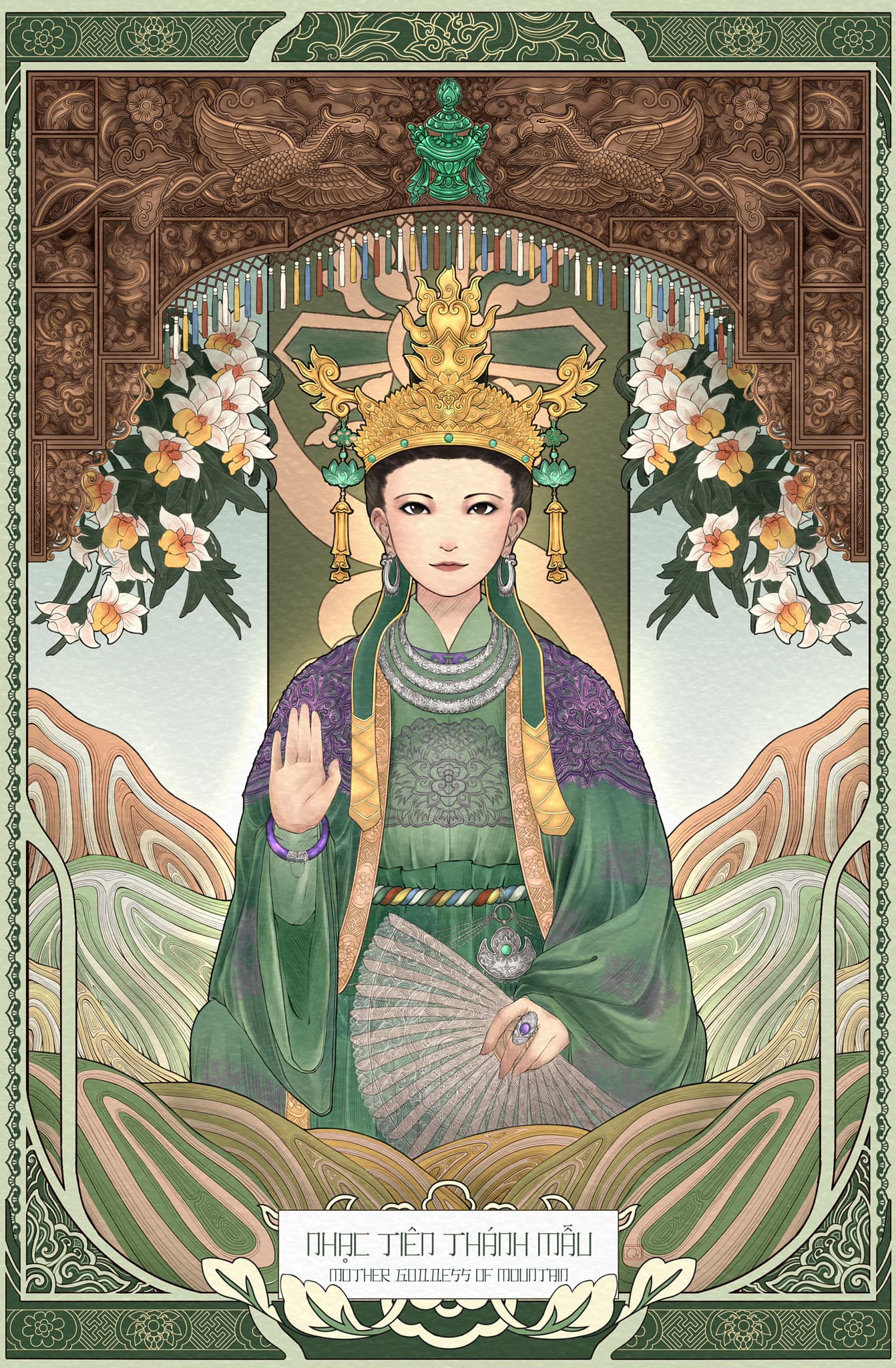
In celebration of the New Moon day of the Tenth month in the Vietnamese Lunar calendar, we would like to reveal the second painting of the Mother Goddess series in our Divine Portraits project. This artwork portrays the Mother Goddess of Mountains and Forests. Painted by artist Lunae Lumen, the portrait is inspired by the Art-Nouveau style combined with other distinguished characteristics of Vietnamese folk paintings. The theme color is green as it is the symbolic color of the Mountain Palace.
Since the Mother Goddess governs the realm of Mountains and Forests, the background features the mountainous landscape of Vietnam, particularly the terraced fields. The colorful mountains also evoke the image of bountiful heaps of grains. By Her sides are two White Fiery orchid (Dendrobium bellatulum) bushes, a rare flower plant native to Vietnam’s northern mountainous area.
The Mother Goddess is holding a translucent hand fan. The idea was inspired by artisan Võ Ngọc Hùng, who made hats from the tropical almond leaves he collected in the forests and processed to turn them pellucid.

For the form of the fan, we referred to the tusk fan artifacts possibly dated back to the Lý dynasty and currently preserved at the Cao Sơn Shrine in Thanh Hoá province.

The fan’s blade is decorated with the elephant pattern on Vietnamese ancient blue and white ceramics from the Lê dynasty.
For the structure of the wooden arch frame above Her head, we also took inspiration from an actual altar frame in a Four Palaces shrine*. There is a carved pair of phoenixes facing toward the Vase of Treasure, one of the eight Buddhist auspicious objects. The phoenixes are based on the pattern engraved on the stele possibly dating back to the Lê dynasty and are currently displayed at the Vietnam National Museum of History*. Floral details cover the rest of the frame, hopefully putting the image of the Mountains Cave in the mind of the audience. The tassels in five colors represent the Five Elements.
Her costumes, in the Lê dynasty’s style, include three layers. The innermost is Giao Lĩnh (crossed-collared robe). The middle layer is Viên Lĩnh (round-collared robe) and Thường wrapping skirt tightened with five-colored tassel ropes. The outermost layer is Đối Khâm (parallel-collared robe) with the shoulder section covered with a lace layer of purple, another color usually associated with the Mountains Palace’s deities.
Her golden crown is inspired by an ancient Vietnamese statue*, with a pair of jade Lotus Flowers (another one of the eight Buddhist auspicious symbols) on two fringes. The ear hoops, the set of three neck collars, and the Khánh chatelaine chain, made from silver, are inspired by the typical accessories of Vietnamese minor ethnicities.
The inspiration for the costumes is mainly from the book Weaving a Realm by Vietnam Centre.








